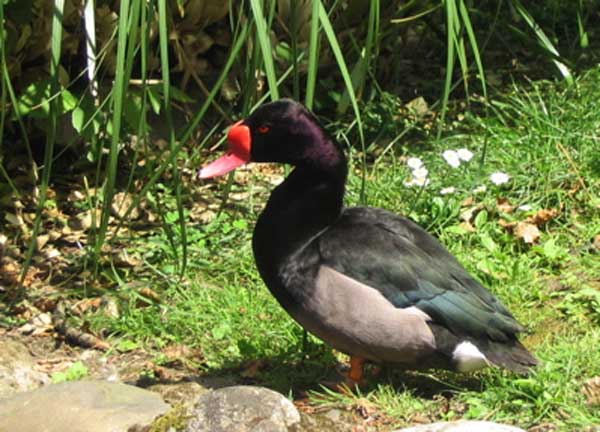Netta peposaca (*) Cladus: Eukaryota Name Netta peposaca (Vieillot, 1816) Vernacular name The Rosybill or Rosybill Pochard (Netta peposaca[2]) is a duck with a distinctive red bill on males and a slate-colored bill on females. Though classified as a diving duck, this pochard feeds more like a dabbling duck. The species name peposaca is derived from a Guaraní word for "showy wings", referring to the broad white stripe that is only visible with stretched out wings. The Rosybill is endemic to South America. It is found in Argentina, central Chile, Paraguay, Uruguay and southern Brazil. The population in southern Argentina migrates northward during the austral winter, reaching Brazil and southern Bolivia. It is a vagrant to the Falkland Islands.[3] Footnotes 1. ^ BirdLife International (2004). Netta peposaca. 2006. IUCN Red List of Threatened Species. IUCN 2006. www.iucnredlist.org. Retrieved on 11 May 2006. Database entry includes justification for why this species is of least concern Source: Wikipedia, Wikispecies: All text is available under the terms of the GNU Free Documentation License |
|

